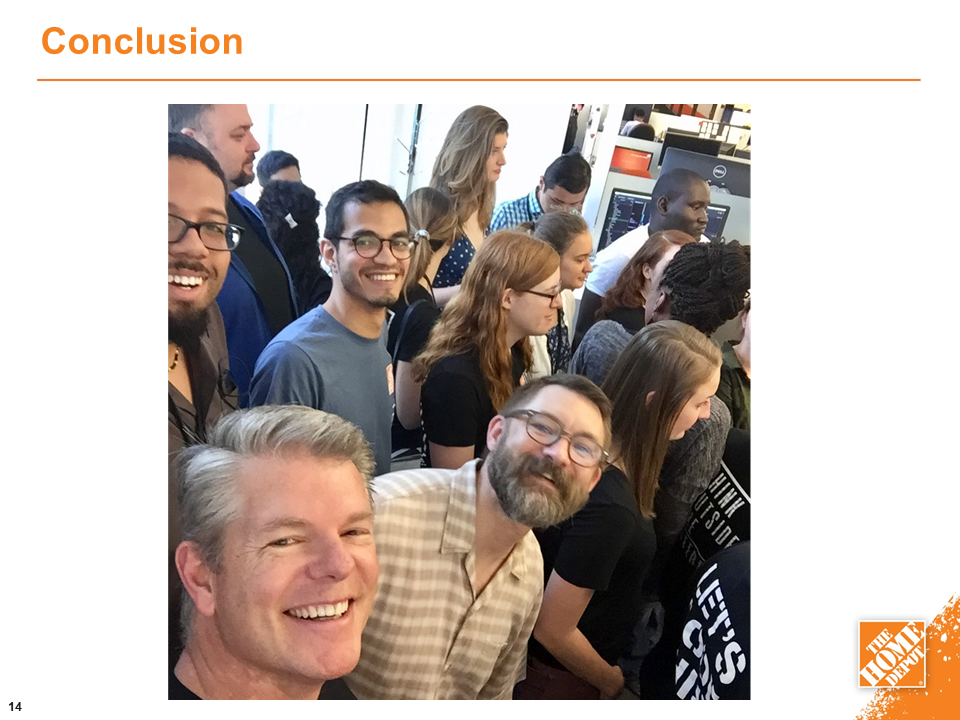During the Summer of 2017, I was a UX intern with the Home Depot at their headquarters in Atlanta, Ga. As an Intern within the large Home Depot Internal Technology organization, I was exposed to and participated in a variety of agile development projects and collaborated with quite a few roles within the company.
The project i undertook this summer was requested by my product manager to help improve data analytics of users. However, wherever I go, I'm always looking for new opportunity and problem spaces to explore and start discovery and framing processes. This was true for Home Depot as well. I undertook preliminary research on a number of topics outside my assigned project including dormant user accounts, live in-store chat help, and leveraging real estate for community engagement. I touch on those other explorations at the end.
Note: Any data presented below is fabricated test data from a test environment.
Discovery and Framing:
ProXtra Customer Analytics
ProXtra Customer Analytics

The importance of data in the business spectrum continues to grow. The ProXtra team saught to leverage the massive amount of data being generated by their target users to drive evidence supported business and IT decisions.
Currently, there are certain information resources that business partners can draw on in order to make decisions. However, there are numerous pains for business partners and managers concerning the accuracy, completeness, and management of information resources. In many cases the information just doesn’t exist.
It was important to go through this User Centered Design Process to present the right information to satisfy users really need. too much, too little, or not valuable data would produce an ineffective tool.

The first step to starting the research process was to prep for user interviews. To do this we had to decide what topic areas surrounding customer data we needed information in a collaborative manner. Decisions on topics were made as a balanced team including a PM, engineers, and designers.
Some Major topics that arose were determining data needs for decision making, learning about current tools, and finding out success metrics.

Once Topics were established, we could reach out to business partners. These individuals were the intended users and stakeholders in the intended analytic product. All have various experiences within the customer organization of The Home Depot. We completed a script based on the mentioned topics focused on data needs and past use of data for decision making.

During Synthesis, we were able to identify key pains and needs related to customer Analytics
There was a need for information on level of user engagement to determine growth metrics.
There is a need to determine login details so that details like retention, active users, and login patterns can be recorded.
There is a need to determine the usage ( use frequency, type of usage) of features.
There is a need segment customers to make decisions.
Data is not readily available ( regarding user industry.)
There are no well established success metrics and unknown keys for value creation for loyalty.
There is not enough data on opportunity or value.
Business partners cannot see trends towards goals easily.

We were able to prioritize the discovered issues based on value and feasibility within our time frame and proceeded with an ideation process.

It was agreed upon that a dashboard would the optimal medium by which to present a data analytics tool. In my initial design I was employing visual assets and design elements from both google data studio and google analytics. However, I was informed that the actual google analytics portal was very limited in its design capabilities. At that point the team decided to fully commit to building our UI in data studio, a beta dashboard builder from google.

Once the first design was completed we could commence with validation. The goals of these meetings were to approach individuals who fit the persona of our intended user and test if our UI solves the problems it intended. We conducted four validation interviews with:
Mauricio Pava: A PM in the Customer Organization
Billy: A PM in the UX Organization working on B2B projects.
Eli: Senior Manager for Software Engineering.
And Bethany: Business Director for Customer Programs.
In preparation, an assumptions and risks chart was created. As seen on that chart, we were able to focus validation on specific features in each interview and determine if it was something we would like to keep or not.

After Validation we were able to analyze each feature and the assumption associated with it. However, there was typically no clear invalidation of the assumptions made. Most of the changes and updates were focused on design to improve the primary interaction of at-a-glance data gathering.
On July 17th, the team was able to deploy the project to production and begin with collection of real data. Some readjustment to the framing of the dashboard might by necessary as input data continues to increase in sheer amount. We are also continue to reference the validation synthesis and gather feedback to iterate on the design. Generally, user feedback has been quite positive to this new data and its presentation.

Earlier, I mentioned my interest into doing some customer research. In doing this I completed an inquiry into the accuracy of the industry code designations and conducted 3 interviews.
Interviews focused on Pros who had accounts, were regulars and home depot, but had zero interaction with ProXtra accounts.
I wanted to get down to bottom of the phenomenon.
Interviewees were individuals from companies with one or more proXtra account that was not used, but made fairly regular trips to the Home Depot.
Insights
Pros were distrustful of Home Depot as a supplier in general, worrying about how much the corporate entity cared bout them as a small company
Pros were distrustful of Home Depot as a supplier in general, worrying about how much the corporate entity cared bout them as a small company
Pros simply forgot they had accounts and often times were not prompted to use them.
The value being offered by the ProXtra program was not consequential to many pros bottom lines.

This s I also conducted research into in-store innovations and services, which fit in nicely with my background in service design. In-Context instant live help was something that had been explored within the Home Depot app and I wanted to learn more about its usage and how effective it was. I did not have time to get to far into this research but I was able to pass it on to my superiors before the end of the internship.